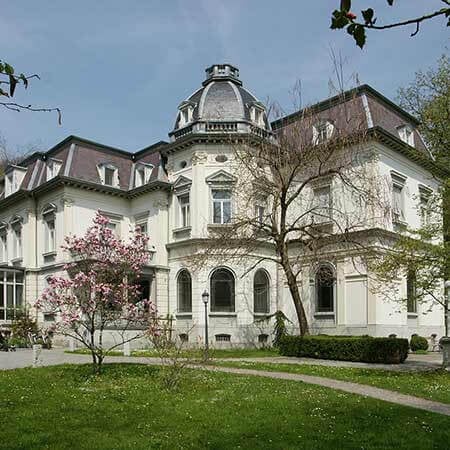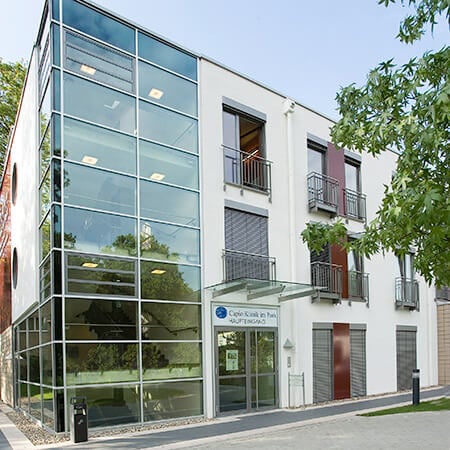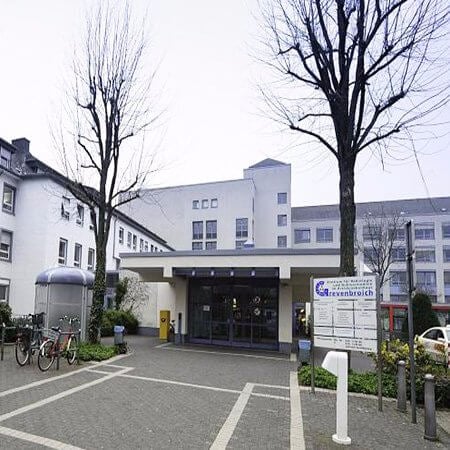About the disease
Varicose veins is disease of valves leaflets, when veins become particularly enlarged and swollen. Varicose veins usually appear on the leg area and in rare cases in other parts of the body. They always originate in leaflets. Valves leaflets are responsible for blood flow as they prevent blood from going backwards to the heart and creating misbalance. If veins are varicose, the person experiences so called “incompetence of valves”. In this case blood, which should have flown further, flows backwards to the heart where it originated and thus leaflets of the valves become large because of the great content of blood in them. Varicose veins may be best seen in the biggest veins on the legs, which are located close to ankle, because superficial veins experience the most pressure when the person is standing up and thus blood accumulates more in these places.
The main complication of varicose veins are certain heart problems. Also it can cause considerable amount of pain while standing. If the problem is not treated on time, the person may experience considerable swelling of the legs, which can enable him to walk, stand or run for long period of time. Varicose veins may also result in eczema and the ulceration. Thin legs turn into thick ones in a long run, which brings negative effect to the muscles. Varicose veins is not considered a very severe disease, which can bring many complications and be dangerous. Nevertheless, its symptoms are very often confused with another disease, called thrombosis of deep veins. Person with progressed thrombosis may die suddenly if the clot inside the vein disrupts blood flow of the entire body system. The usual therapy for varicose veins are special stockings. and if the condition is very severe the doctors may apply surgical intervention. There are different types of vein problems. The person may develop not only varicose veins, but also blue and spider veins, which are more dangerous than varicose veins.
Symptoms
- The skin of the legs becomes either blue or yellow
- The legs are painful and the walking becomes heavy
- The disease may be accompanied by spider veins, which usually appear close to each other
- Ankle is the most painful part of the leg
- Cramps appear when the person suddenly stands up or when he wakes up
- The leg injuries cure longer than usual
Diagnosis
Varicose vein treatment center determine the type, extent and severity of venous disease using specific devices. To understand the nature of the disease, the doctor will have to research the family history and calculate for the patient the risk factors of developing the thrombosis. After that the doctor examines the patient, making him stand, sit and move, so that he can assess the location of veins and their size. Varicose veins usually appear when the person stands up o suudenly or makes several rapid movements at once. More complex examination may help the doctor speed and direction of venous blood flow to check blood goes back to the heart valves instead of going forward. Phlebography is used only in exceptional cases when the X-Ray could not determine the state of veins.
Treatment
Varicose veins treatment is usually done for aesthetic reasons; however, some patients experience severe varicose veins pain.
- Compression therapy is the oldest varicose veins treatment. It reduces the width of veins and speeds up the flow of blood, thus eliminating swelling in the legs. Veins may widen again after the therapy is finished, that`s why a person should use this method for the rest of his life at least once a year.
- Varicose veins surgery removes large varicose veins, that cause most blood flow disruption. Varicose vein removal is usually performed under local or general anesthesia and it requires hospitalization. Because of its long recovery period, varicose vein removal is used only in exceptional cases. Recovery takes about three weeks and all that time the patient must be hospitalized.
- Sclerotherapy for varicose veins is minimal and the least invasive varicose veins treatment. During sclerotherapy the doctor injects special medicine for varicose veins into the lumen of varicose veins. This medicine causes inflammation and adhesion of the troubled vessels, thus making it shrink to its normal size. After the procedure the patient may experience some undesirable side effects, such as allergic reactions, death of skin cells, scars on the skin, damage of nerve endings, migraine symptoms and thromboembolism, although the last one is very rare.
- Radiofrequency obliteration of the vein involves the introduction of a catheter into a vein using radio waves. heat reduces the vein and the blood flow goes in the right direction. Pain after this type of varicose veins surgery is minimal and patient experiences rehabilitation during several days after the procedure. This method should be used with caution for patients who wear cardio-pacemakers and implanted defibrillators.
- Laser treatment for varicose veins obliterates the size of veins using the laser. The procedure does not require anesthesia or any stay in a hospital ward. It also does not impose any severe restrictions in further daily life. The laser light is introduced into the vein through a small puncture. The procedure usually takes about 50-60 minutes and it can also improve the state of person`s skin, turning it from yellow or blue into the normal skin color.
- If the laser treatment for varicose veins did not help, the doctors use microphlebectomy. Microphlebectomy removes varicose tributaries through micro punctures (about 1 mm) using a special tool. Postoperative pain is minimal and in most cases do not require additional treatment. After the treatment the person is required to wear special varicose vein stripping daily. Period is usually specified by the doctor. Another varicose veins medicine may also be prescribed in form of daily injection to prevent thrombosis. The course of this medicine usually lasts about 4-6 days.
- Stripping and crossectomy is used for treatment of saphenous vein.
Authors: Dr. Vadim Zhiliuk, Dr. Sergey Pashchenko











